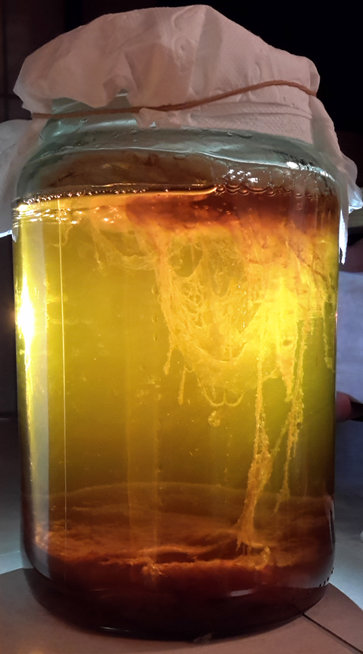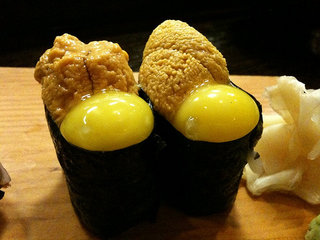| « Friday Foodpic: Meat! | Friday Foodpic: Cemitas Pueblo » |
Random Thu Mar 12 2015
Fascinating Origins of Gourmet Foods

What the heck is yuzu? As I was eating a yuzu-marinated fish a few day ago, this question suddenly popped in my head. I had seen this ingredient used a thousand times in TV shows and on restaurant menus, but I didn't know how to describe it other than "sour Asian stuff." So out of pure curiosity, I looked into the origins of common "gourmet" ingredients or food products, and I learned some interesting tidbits:
Truffle
From the Latin word tuber (or "lump"), truffles are the fruiting bodies of subterranean Ascomycete. Or, the fallopian tubes of underground fungus. Though unpleasant-sounding, truffles are one of the most prized ingredients in European cuisine, and each pound (depending on whether you get white or black truffles) costs thousands of dollars. Because truffles cannot be grown in the traditional sense, they're simply "cultivated" by planting roots of certain trees and hoping that truffles eventually crop up. During harvesting, dogs and pigs are used to "sniff" out the truffles.
Meyer Lemon
A Meyer lemon is actually not a lemon at all, but a cross between an actual lemon and an orange. The fruit is indigenous to China and was commonly grown in people's gardens. A USDA employee named Frank Nicholas Meyer bought some seeds back from China during the early 1900s, though the fruit only became mainstream almost a century later. The Meyer lemon is sweeter, less acidic, and more fragrant than the traditional lemon.
 Yuzu
Yuzu
Like the Meyer lemon, the yuzu is East Asian in origin and is a cross between a mandarin orange and another (unheard of) fruit called the papeda. Like a grapefruit mixed with a sour orange, the yuzu's flavor is very tart and used sparingly during cooking. Apparently, yuzu is the only citrus fruit that grows in Puget Sound.
Shallots
Native to Central and SE Asia, shallots are small, purpleish onions that taste sweeter and "deeper" than their traditional counterparts. They also don't spoil very easily, so you can keep them around for a few months. Shallots are part of the pungent but delicious Allium plant family, which also includes scallions, leeks and chives.
 Kombucha
Kombucha
Native to Northern China (notice a trend here?), kombucha is a fizzy fermented drink typically made from tea, sugar and yeast. Kombucha was a widely popular health food in China during the mid 1900s, though that trend has only recently descended upon the US like a swarm of famished hawks. Though kombucha is often touted as a health drink, there's no scientific proof that it does anything but make people feel special about themselves.
Duck Fat
In the US, most duck fat and duck meat in general comes from Pekin ducks, or those beautiful golden birds you see hanging at Sun Wah. Pekin ducks are native to China and were "accidentally bred" when barges spilled grain into the waterways. Deeply savory, duck fat can be frozen and has a high smoke point, meaning it doesn't burn as quickly as other oils (i.e., olive oil and butter) and can therefore can be reused.
Marcona Almonds
Unique to Spain, Marcona almonds are rounder, sweeter and moister than their traditional counterparts. They're blanched (e.g. skinless) and after a light frying session, are traditionally served with olives and cured meats.
 Uni
Uni
Uni are not the eggs of the spiky sea urchin, but the gonads. In other words, if you eat uni in sushi or pasta, you're eating delicious underwater lobes of ovaries and testes. Fresh uni tastes like a briny, sweet custard, but will rot pretty quickly if you let it sit. Uni is also a big source of a cannaboid neurotransmitter called anandamide, though that doesn't mean you will get high eating it.
*All information from Wikipedia.








